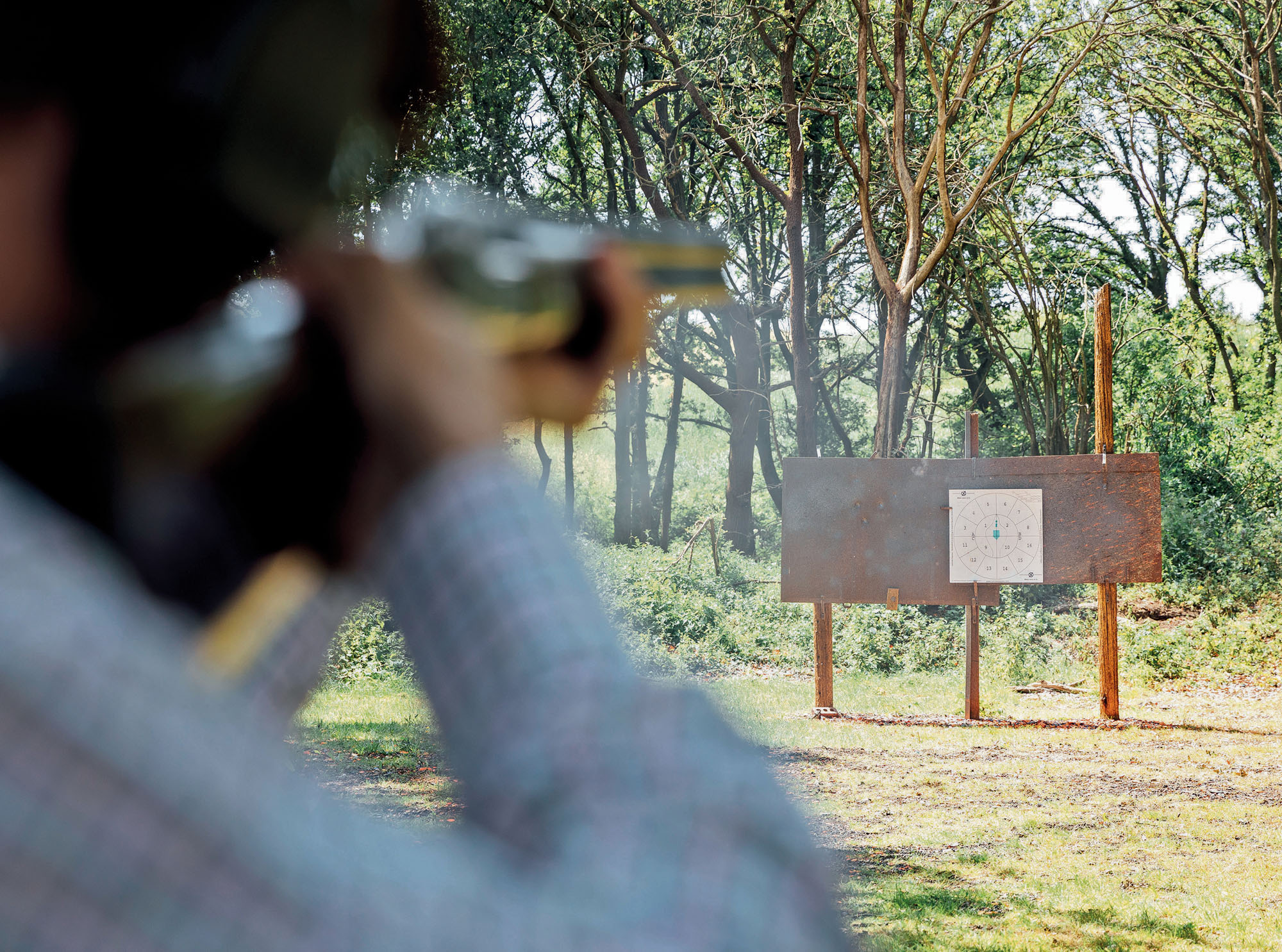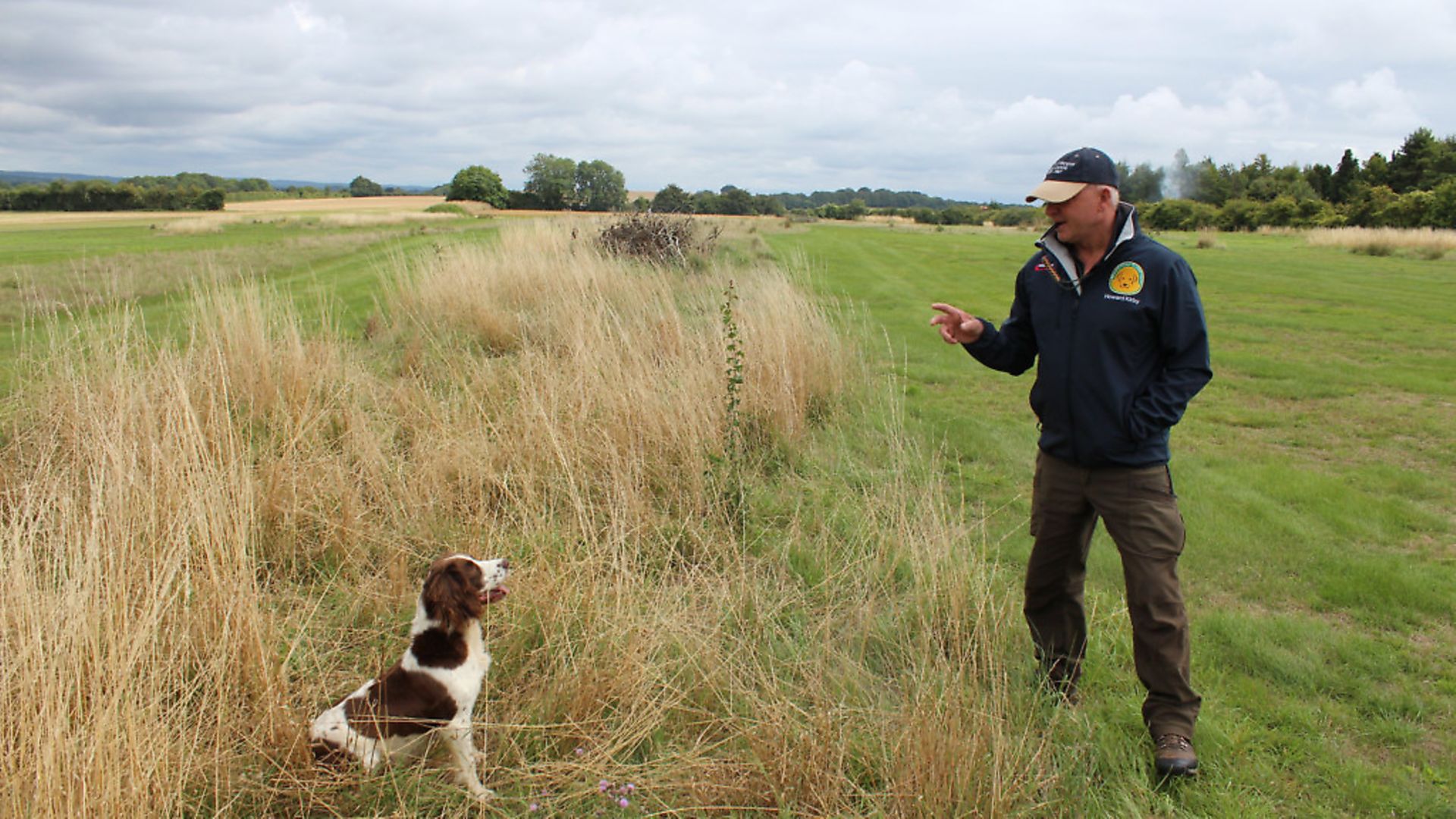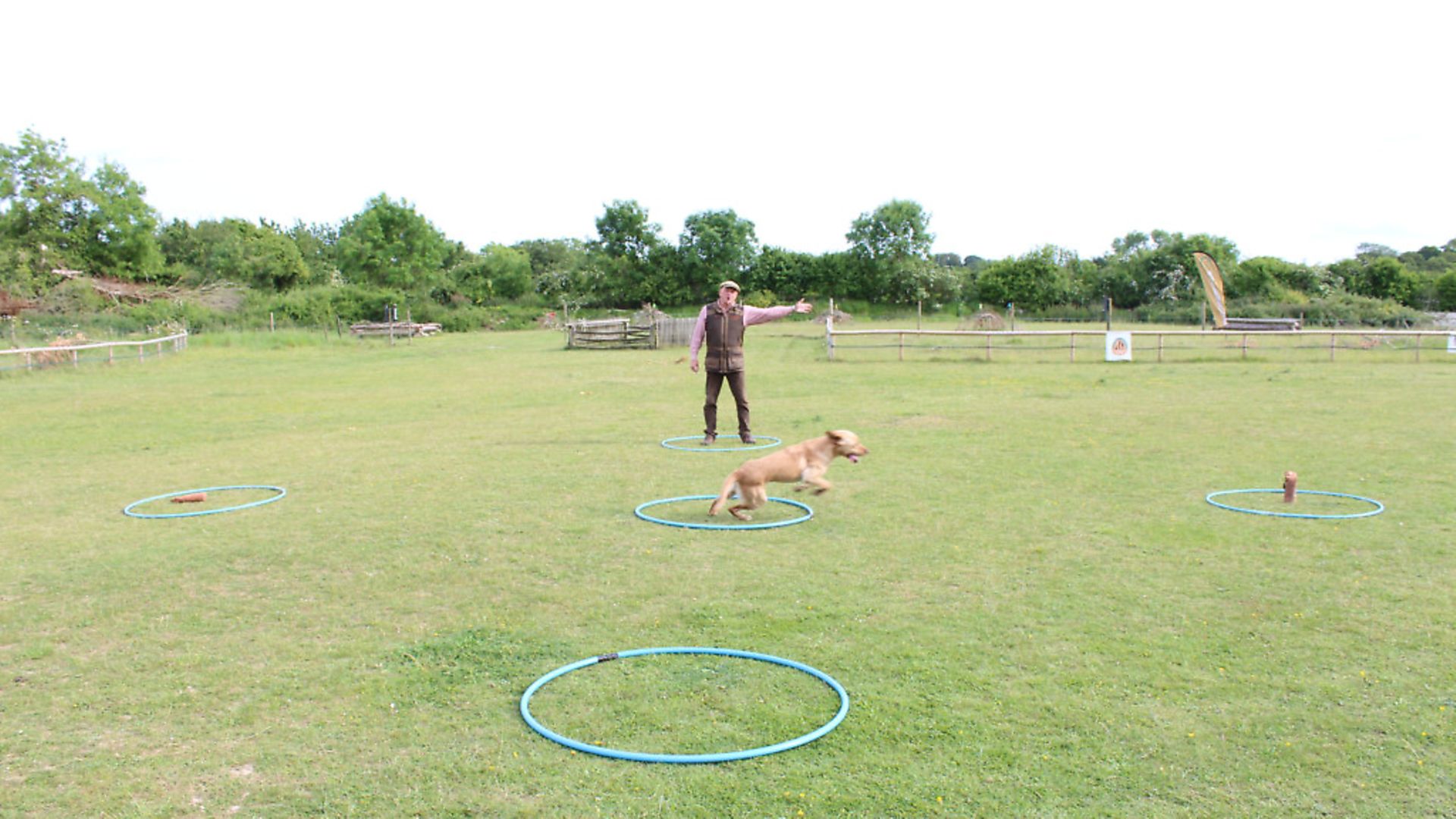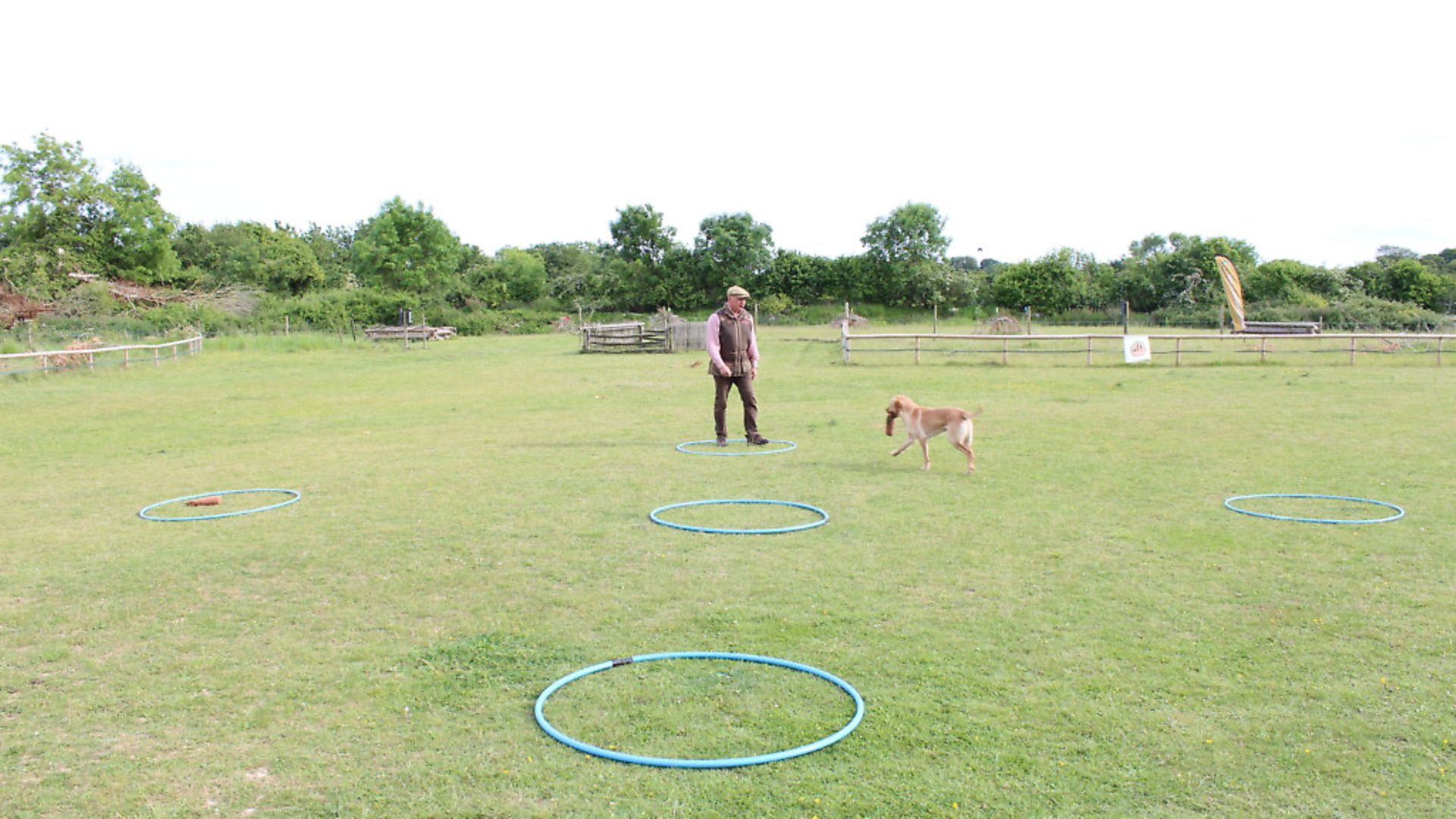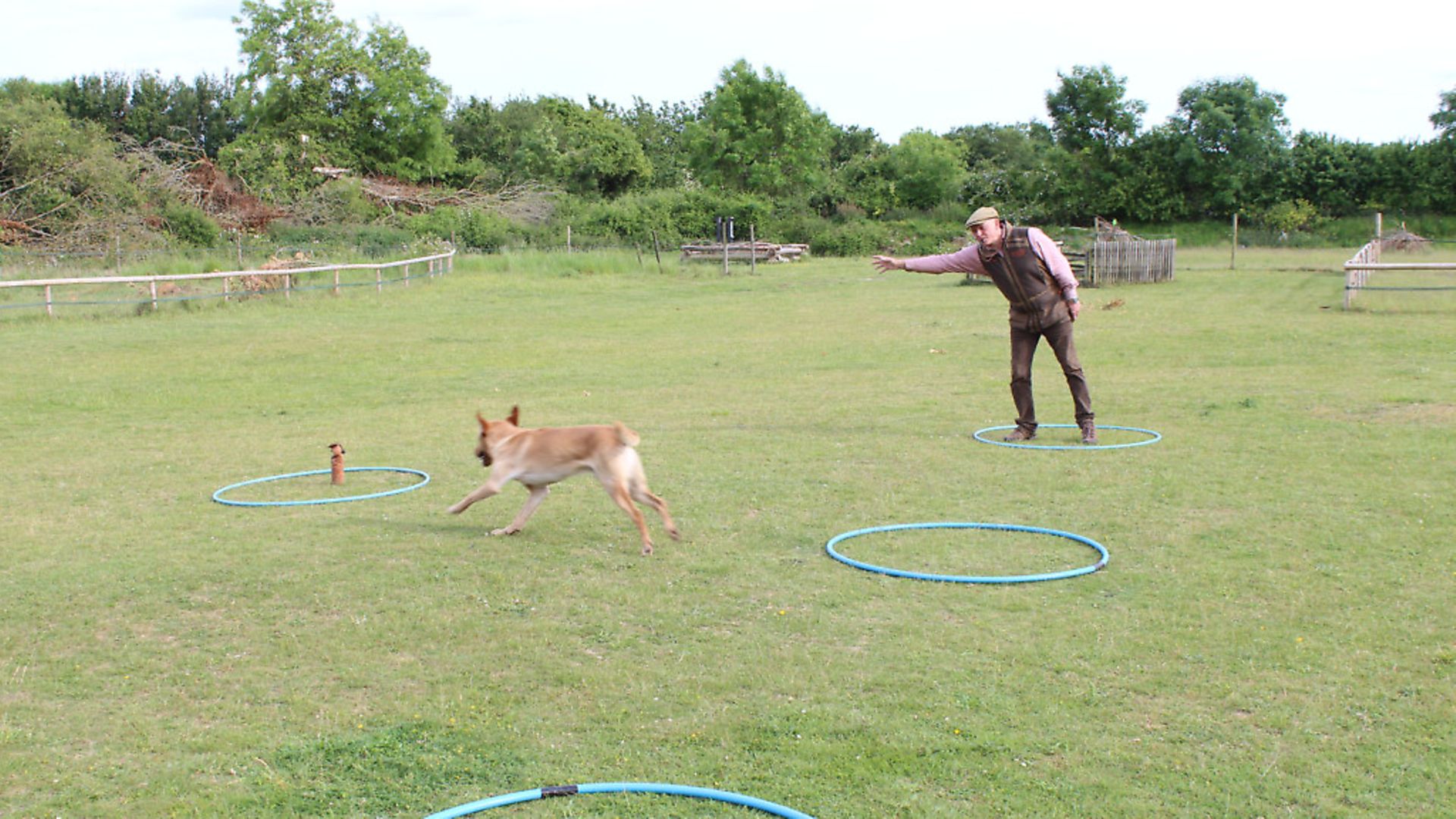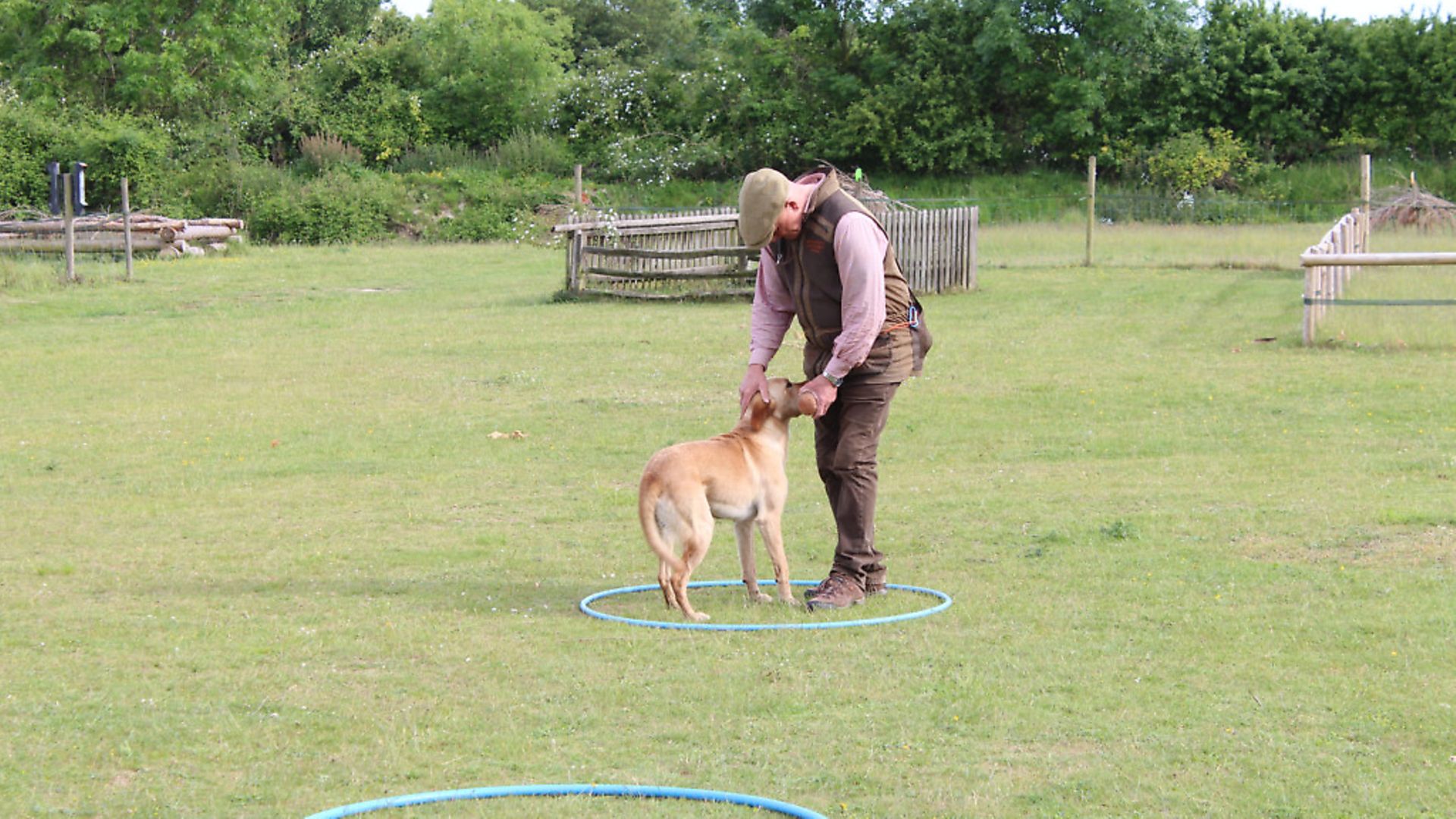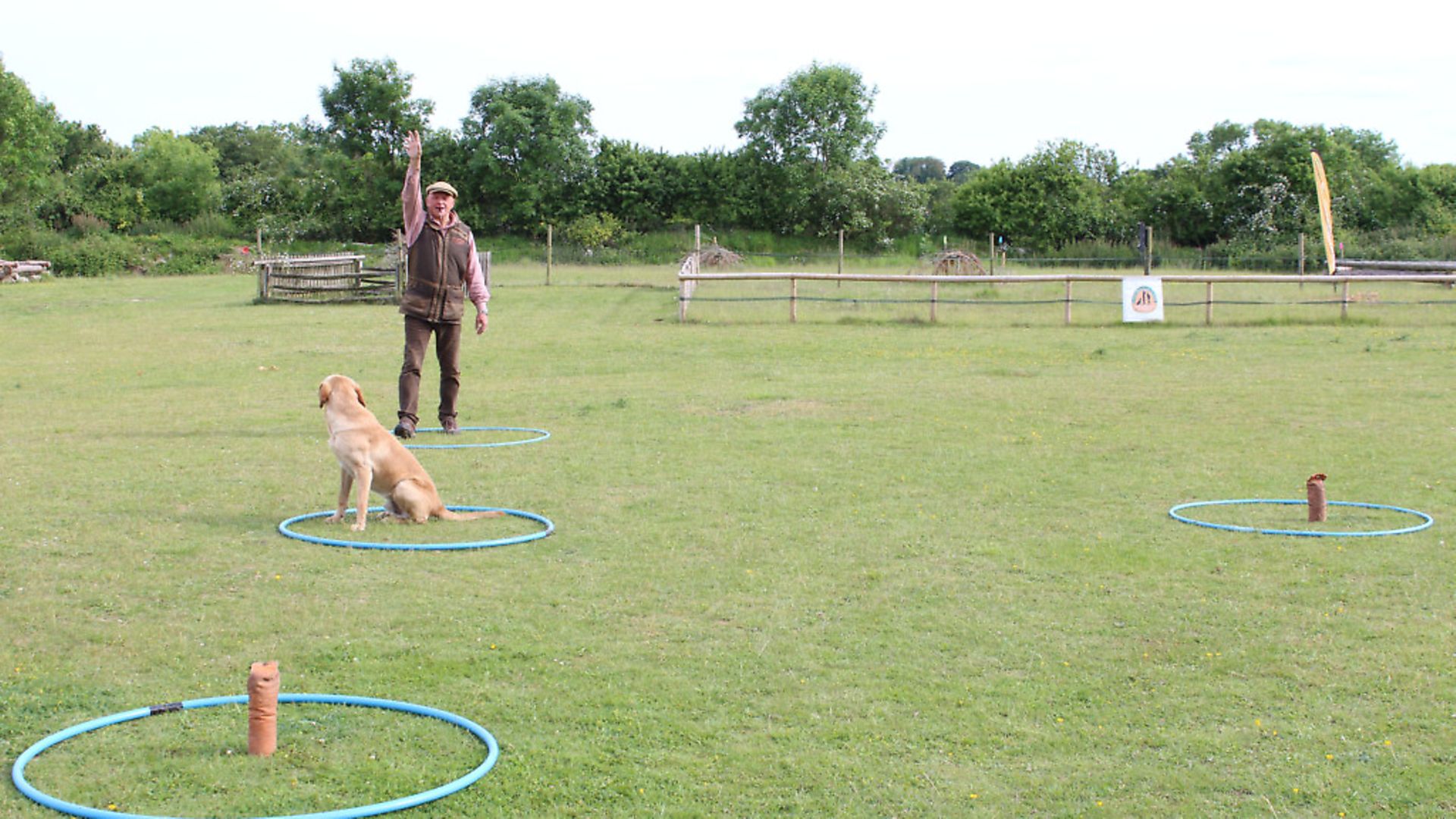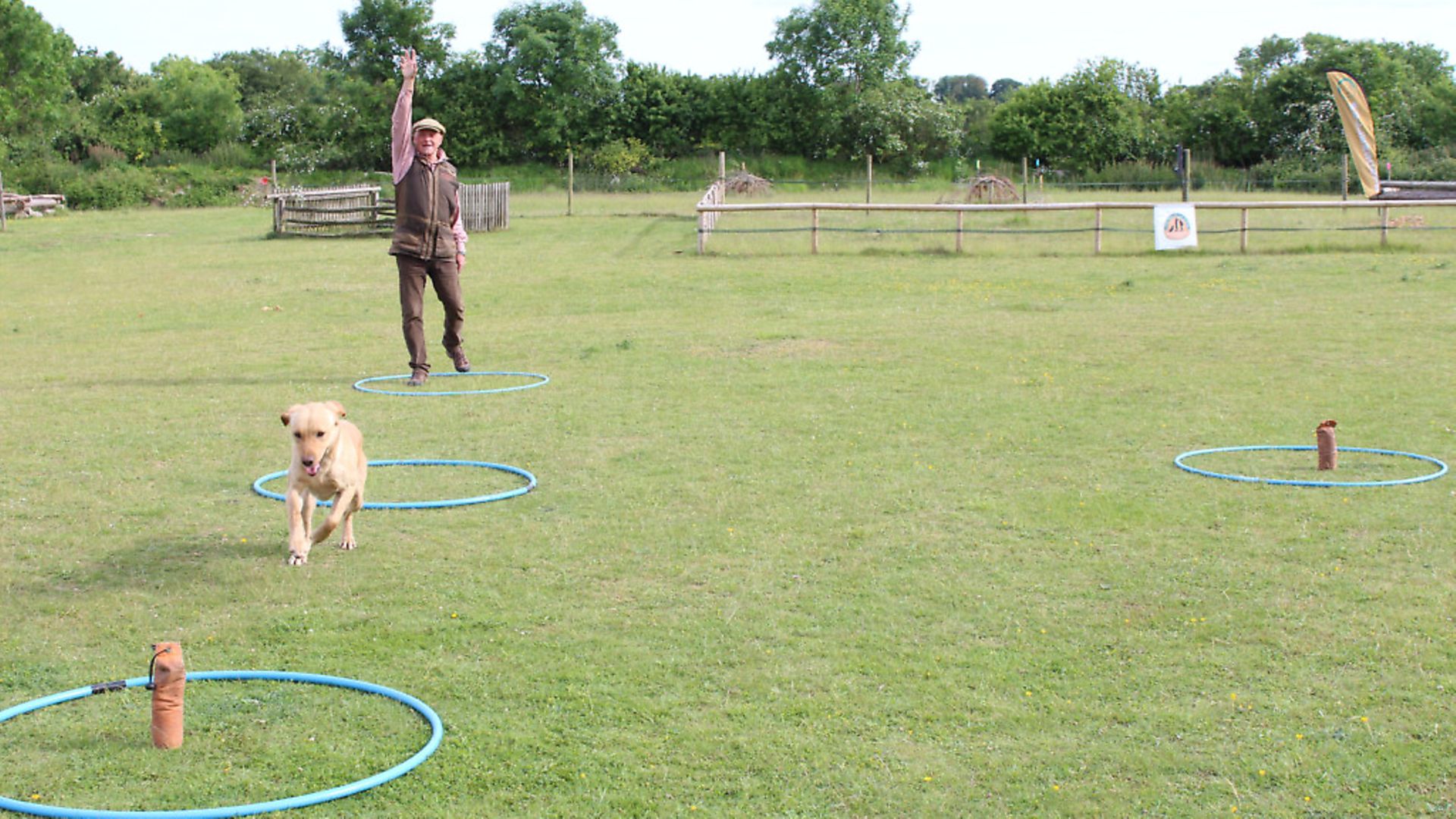Gundog training – distance handling & the stop whistle
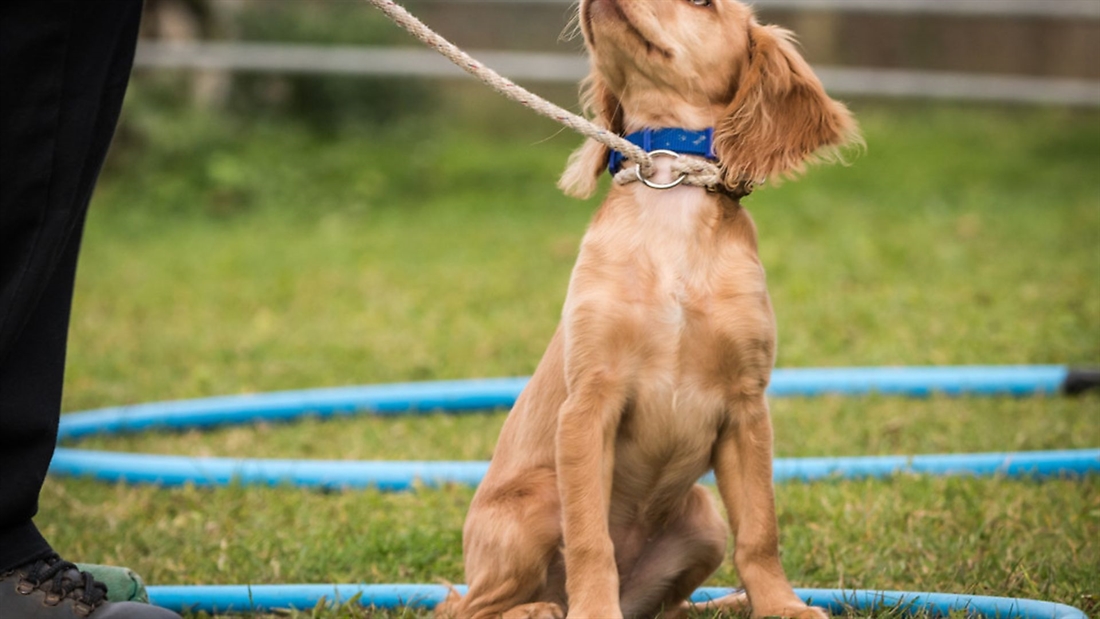
If you want to handle your dog effectively at distance, you’re going to need a very good Stop whistle! Howard Kirby explains how using target hoops and the retrieving clockface
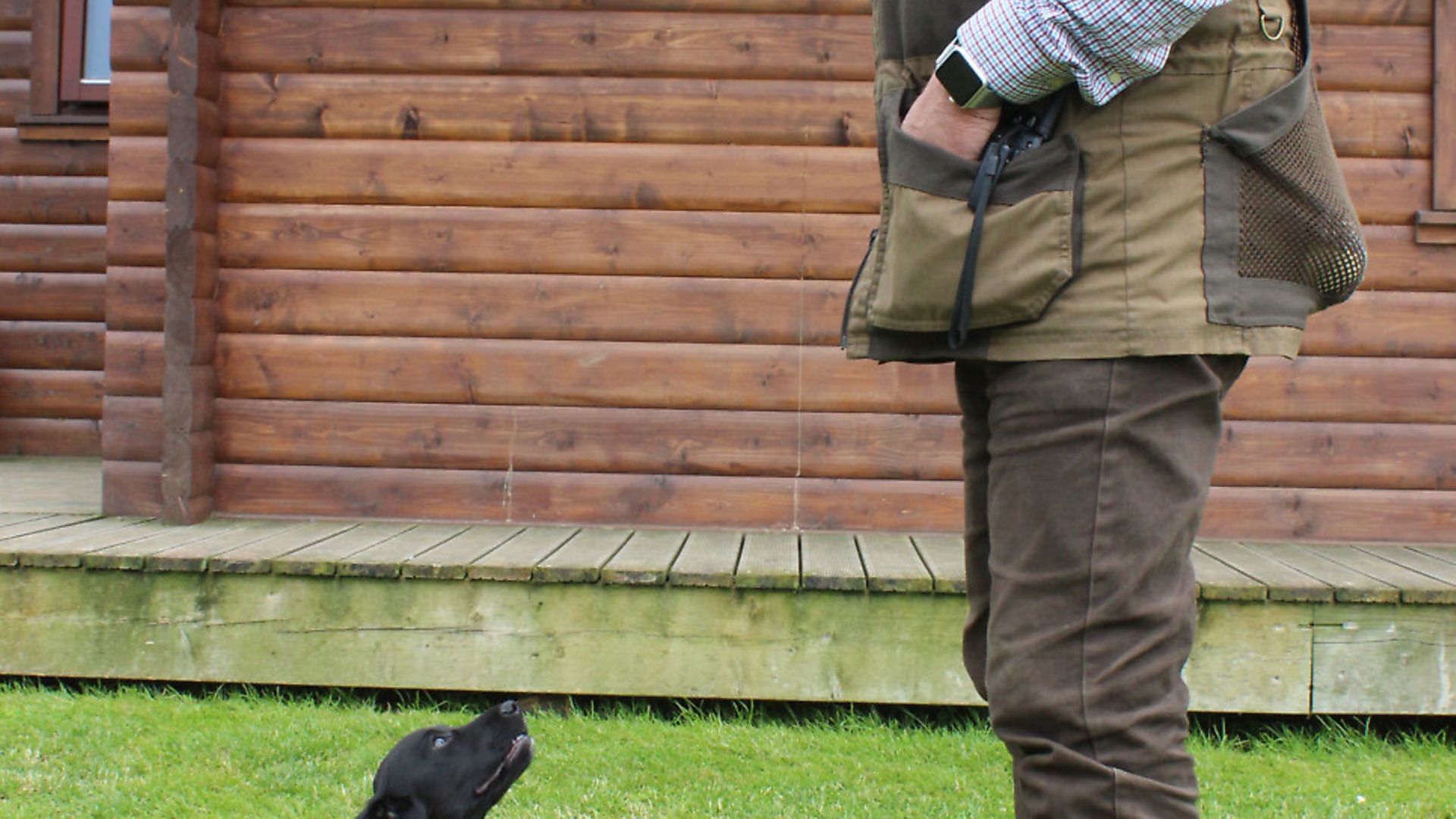
We’re going to have a think about handling your dog at distance in this article. This skill is not a necessity for all partnerships as some of the best beating and picking-up teams perform their roles perfectly well without it. There are many reasons why people choose to work with gundogs so training the dog to take directional commands is just that…. your choice.
My advice is that once you’ve made the decision to train your gundog, whether it’s a spaniel, retriever or HPR, the process of teaching your dog to take direction at distance will enhance that essential connection between you and will encourage a really good Stop whistle. Ah, the Stop whistle! Arguably an essential in any dog training scenario, pet or working.
In order that you can give a dog directional commands, you must first grab his attention. So how are we going to do that then? Well, it’s the Stop whistle that’s going to be the starting point. It’s the Stop whistle that’s initially taught to mean: “Hey you, stop where you are, look at me, you’re going to get a reward.”
Once established in a positive way, it’s almost certain that you’ll have to school the dog to understand: “Hey you, stop there, you know that Stop whistle that you learned last month?”
“Yeah…”
“Well it’s compulsory; if you don’t stop there’ll be hell to pay.”
“Ruddy heck, I’d better stop then,” says Fido.
If only we could have that conversation with our dogs. Life would be so much easier. The truth is that the more you reinforce a behaviour with positive conditioning, the more likely the dog is to offer the behaviour when distractions are greater.
We need to start conditioning when the pup is tiny. If the Recall and Sit whistles are applied correctly and rewarded appropriately, it’s much more likely that a dog’s reaction to a whistle sound is likely to be strong. Most novice handlers seek a one-stop training exercise to get a dog to reliably stop at distance. It’s really important that you learn that it just doesn’t work like that. Most dog training is a layering up exercise.
You must be patient and avoid trying to use the Stop whistle on a youngster that is yet to fully understand what is required. Clients regularly describe how Fido is great when he’s really close but pays no attention once his blood is up.
Firstly …STOP… if your dog is regularly ignoring either a verbal or whistle command don’t just keep going. You need to think about a new strategy… More training is required.
Try to keep in mind that you need to win the trust of your dog. You need to convince it that by following your instructions it will be more effective in getting the dummy in its mouth. Let’s see if we can put together a training program that will encourage this.
SITTING TO THE WHISTLE
* As soon as you start puppy training, gently blow the Stop whistle each time you ask the dog to sit. This can continue throughout the dog’s life and will serve to reinforce the command.
* As with all commands, once the puppy has learned this behaviour, ensure that you do not allow it to ignore your command. At this stage, ensure the puppy is engaged with you and it will almost certainly be very close to you. Do not try to get the puppy to sit to the whistle when it is away from you as this is likely to fail.
* Use a target hoop, mat or placeboard to teach the youngster to stop and sit a short distance away from you. Put the dog in a Sit/Stay directly opposite. Position the target so that it is just in front of you. Quietly recall the dog towards the target, step forward with an outstretched hand and stop the dog using your energy and presence as a block. Gently blow the Stop whistle as you do. Say “good” followed by a food reward or throw a dummy at the moment the puppy sits to the whistle command. Slowly build the gap between yourself and where the puppy is sitting. Try to keep in mind that we are trying to build the dog’s understanding that the sound of the Stop whistle means that if he sits down and looks towards you, he will receive a reward. This will be a slow layering up process. At first, the puppy will respond and sit when close to you. If we train correctly, the dog will eventually learn to stop and sit wherever it is.
This same exercise can, of course, be done without any form of target. The target helps with precision, accuracy and understanding, both for the dog and handler. Have a think about how the use of target training works.
If you choose to teach a dog to hit the target from the outset, of course he will bring this mindset to other schooling exercises. As you recall the dog, it will very quickly grasp that to get the reward he must sit in the hoop. You will, of course, be blowing the Stop whistle as he sits. He is hearing the sound by association, and subconsciously this will be gently sinking in. This does assume that your timing and instructions are being delivered accurately.
This assumption of handler competence is something that we at Mullenscote do not take for granted and if you’re new to this exercise, neither should you. Dog training is a skill. Watch an expert with their dogs. It looks easy, they don’t appear to be doing much, it’s fluid and joined up. Apart from a few ‘naturals’ among us, a beginner will look like the polar opposite. And will probably be ineffective. This isn’t because you are a failure, it’s simply because you have yet to acquire the experience. Yes, you will need to study books and video, watch and train with people that are at the top of their game, but training dogs is a practical skill, and you will not get good at it without getting off the couch and having a go. Put pressure on yourself to learn…. not the dog.
* Once you start directional training, throw a dummy either behind, left or to the right of the dog. Make it clear to the dog that you want him to stay seated while you slowly slide the appropriate arm either out to your side for left and right, or above your head for the back command. Ensure your palm is flat and facing the dog to maximise the visual cue.
Gently blow the Stop whistle while the dog is sat opposite looking straight at you. Wait for approximately two to three seconds, and the dog should be focusing on you waiting and watching for instruction.
Now give appropriate left, right or back command. The purpose of this exercise is to build the dog’s association with sitting and looking at you when he hears the Stop whistle. He then learns that this brings reward.
So there are a few tips that will help you to school your dog to want to sit when they hear your stop, look at me whistle. Done properly, this will work, but it will take time. Be consistent, thorough and patient and you will suddenly be aware that your dog starts to sit and look at you for direction. This is the Eureka moment, you have succeeded in getting him to understand that you can help him.
In the next article, we’ll carry on looking at the directional stuff, so make sure you’ve studied and practiced. No lame excuses. Get up earlier and go to bed later if required. If we don’t show our dogs what we want them to do then they’ll shape their own behaviours. Keeeep training!

